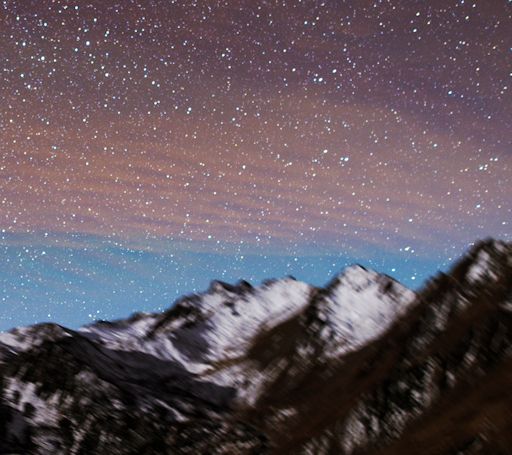This month, a lot is happening in the mesosphere. The mesosphere is a layer of Earth's atmosphere above the stratosphere; it is the realm of sprites, noctilucent clouds (NLCs), and airglow. Starting on Nov. 17th, NASA's AIM spacecraft spotted bright noctilucent clouds forming in the mesosphere above Antarctica. Then, in an apparently unrelated development on Nov. 24th, the normal dome of airglow over China split in two. Xiao Shuai photographed the event from Mount Balang in Sichuan:

photo Xiao Shuai
This is called a "mesospheric bore"--and not because it's dull. A bore is a type of atmospheric wave with deep ripples at its leading edge. Indeed, you can see the ripples in Shuai's photo separating the zone of airglow from clear sky.
Bores fall into the category of "gravity waves"—so called because gravity acts as the restoring force essential to wave motion. Analogy: Boats in water. When a boat goes tearing across a lake, water in front of the boat is pushed upward. Gravity pulls the water back down again and this sets up a wave.
In this case, instead of water, rarefied air is the medium through which the wave propagates. The sudden boundary in the airglow layer is probably akin to a hydraulic jump. But what created the disturbance in the first place? (What is the 'boat'?) No one knows.
"There may be more updates in the coming days as scientists from NASA and the Chinese Academy of Science check data from satellites to learn more about this event," says Jeff Dai, who has been helping Xiao Shuai process and communicate his extraordinary images.
Bron: http://spaceweather.com/ | Gewijzigd: 30 januari 2017, 12:56 uur, door Joyce.s

 Mesospheric bore
Mesospheric bore




